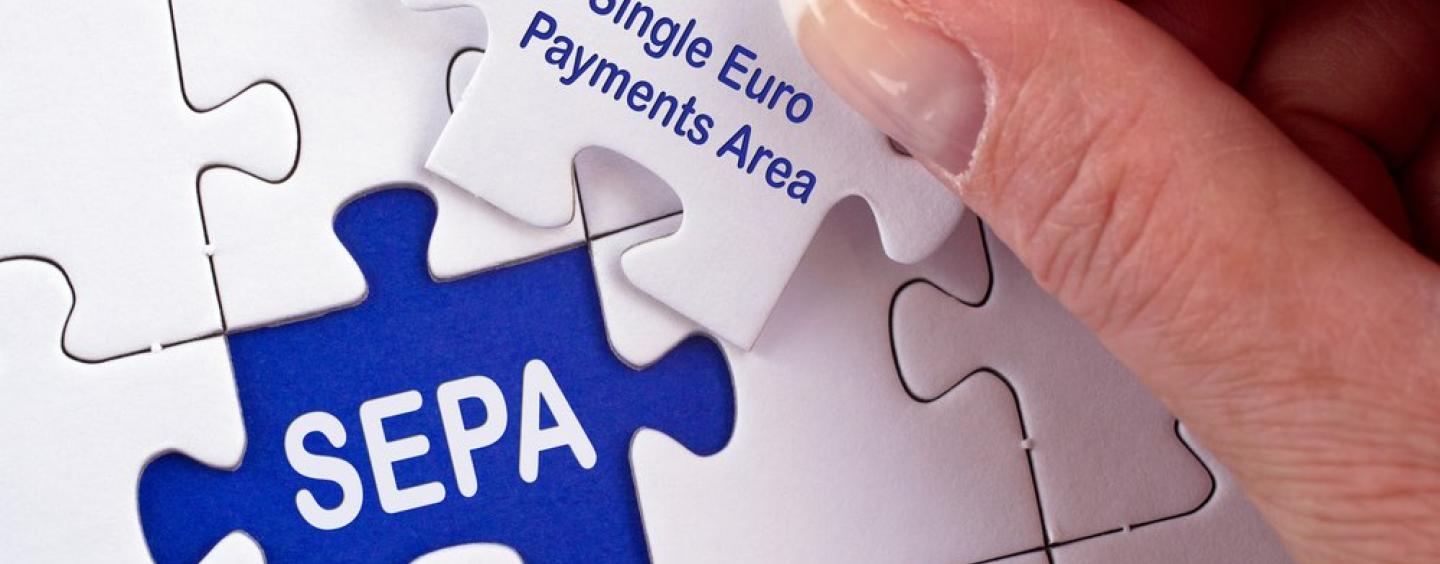SEPA transfers are cross-border transfers made via SEPA or Single Euro Payments Area.
SEPA is the current configuration for cross-border euro (EUR) bank transfers. This format is working towards simplifying cross-border euro transfers within this region to the point of making them synonymous to any local transfer. Nearly all SEPA transfers are free.
The banks that accept SEPA payments are either a network of intermediary banks that allow seamless cross-border transfers or have direct business ties with other banks, making SEPA transfers similar to a local transfer.

By streamlining cross-border euro bank transfers, the benefits of SEPA transfers are now made fast, cheap, and simple, thereby benefiting banks and businesses alike.
If your business is dealing with numerous cross-border euro transactions, these are reasons enough to make you care about SEPA. To help you understand it better, we’ve answered several frequently asked questions about SEPA.
SEPA FAQs
Which Countries Support SEPA?
SEPA consists of countries in the Eurozone, including all 27 EU member states and a number of other countries which also allow euro bank transfers.
Check out our downloadable SEPA countries list for your convenience. In this page, we’ve broken down the list into SEPA countries that use the euro, SEPA countries where euro is not local currency, and French overseas territories.
What countries use the euro?
- Austria
- Belgium
- Cyprus
- Estonia
- Finland
- France
- Germany
- Greece
- Ireland
- Italy
- Latvia
- Lithuania
- Luxembourg
- Malta
- Netherlands
- Portugal
- Slovakia
- Slovenia
- Spain
How much does a SEPA transfer cost?
With the goal of making cross-border transfers within the specified region equivalent to local transfers, SEPA transfers cost minimal to zero fees. The fees should be the same as a domestic transfer, and usually, this is for free.
Generally, receiving a SEPA transfer within any European country made through SEPA also does not incur any bank charges. However, a number of banks may charge a fee to receive a SEPA transfer. A number of banks, especially Spanish and Italian banks, will look for ways to charge additional fees. So it is wise to verify with your bank.
How long does a sepa transfer take?
SEPA transfers typically take 1 to 2 business days to be credited on the recipient’s bank account. The funds arrive the next business day in the majority of cases.
What does SEPA mean in banking?
The European Payments Council or EPC has designed various SEPA payment arrangements to suit the different needs of people considering to use the system. These include SEPA Direct Debit and SEPA Credit Transfer. SEPA Direct Credit includes both business-to-business and core service.
SEPA Direct Debit is a system used in Europe that enables merchants/creditors to collect euro-denominated payments from the bank accounts of consumers/debtors in SEPA countries and affiliated territories. This is on the condition that the debtor/consumer has signed a legal approval granting the merchant/creditor to withdraw the money. To be able to collect a SEPA payment, the merchant/creditor must have the International Bank Account Number (IBAN) of the consumer/debtor. Both recurring payments and one-time transactions can be processed using SEPA direct debit.
The implementation of this system includes all eurozone countries as well as non-eurozone SEPA countries. All euro payments in these countries must be collected using this system.
This system is convenient for paying expenses like rent, insurance premiums, subscriptions, and the like. For businesses, it’s a suitable way of paying financial obligations and managing cash flow if making cross-border funds transfers.
Are SEPA payments only in Euro
Yes, SEPA has been designed to simplify and streamline cross-border euro transfers within the SEPA region.
What is SEPA Instant?
SEPA Inst Payment or SEPA Instant Credit Transfer Scheme is an electronic retail payment solution that gives you the capacity to make SEPA payments any time and any day of the year, in real time. The funds are credited to the recipient’s account within 10 seconds, making it truly instant! It’s almost as if you’re paying cash since the process is virtually instantaneous and is not impacted by weekends and bank holidays.
Initial maximum SEPA Instant Credit Transfer value will be €15,000 per transaction. Fees are minimal similar to those in regular SEPA transfers, which indicates that incoming transactions are absolutely free.
SEPA Instant will come in handy for individual-to-individual and consumer-to-business transactions. You can use this bank transfer technology to pay wages, pay for goods and services with your business partner, split the bill at the restaurant, and many other transactions. Get a SEPA account with instant SEPA available with our partner Narvi Pay.
What is a SEPA Number
You’ll need the International Bank Account Number or IBAN of the party to whom you are making a payment to be able to make an inter-Europe payment. The IBAN provides an easy way for validating the recipient’s bank account number to make such payment. Without it, the payment cannot be processed as it has been made requisite since 2016. The SEPA IBAN-Only requirement has been instrumental in the reduction of cases of payment errors by promoting SEPA payments to be done electronically via STP or Straight Through Processing. Minimizing manual involvement reduced errors.
Is the USA a SEPA country?
No, the US is not a SEPA country since it is not in the Eurozone and does not use the euro currency. Here’s the complete list of SEPA countries.
What is the difference between SEPA and SWIFT?
The following are the differences between SEPA and SWIFT:
- A SEPA transfer can only be made using euros within the Single Euro Payments AREA, while a SWIFT transfer can be made using most currencies between any bank in any country that enables SWIFT service.
- Some declare that SEPA charges must be split between the payer and payee, while some banks are required to credit the full amount to the payee without extra charges. In comparison, charges for SWIFT payments can be shared, paid by the payer or the recipient, depending on the recipient country and payment currency.
- A SEPA transfer must cite an IBAN while a SWIFT transfer can cite both an IBAN or account numbers.
- SEPA payments will arrive the next business day as long as they have been made prior to the cut-off time of 17:30. In contrast, it usually takes 1 to 3 business days for SWIFT payments to be credited to the recipient’s account if there are no setbacks. It could take 7 to 10 days depending on circumstances that could cause delay, such as timing of when the money is sent and time zone differences, amount being transferred, countries and currencies involved, identity verification, and technical issues. Cut-off for SWIFT payments is at 14:30.
From the consumer to the large businesses, SEPA is a system that has benefited everyone who requires cross-border payments, and has opened the floodgates of opportunities for banking institutions. It is transforming the way cross-border funds transfer are being made within Europe.
Page content
About the author

Disclaimer
This publication is provided for general information purposes and does not constitute legal, tax, or other professional advice from B2B Trade Payment Services AB or its affiliates, and it is not intended as a substitute for obtaining advice from a financial advisor or any other professional.
